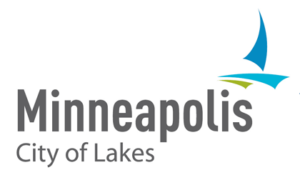The Minneapolis City Council Housing Policy and Development Committee will hold a public hearing on May 2 to allow “public verbal input pertaining to the Draft 2018 Consolidated Action Plan (CAP).” Your participation is important. The city is required by HUD to listen to you and pass along your criticisms to the federal government that cuts the checks.
The city has a grant from HUD for more than $14 million. And it’s no surprise who will benefit most from this pot of money: big developers, the Minneapolis Police Department and city bureaucrats.
Developers have a shot at $2,066,717 for new construction of homes or rental units. They could do conversion and rehab units for transitional housing for $900,120. Or, they could get a piece of tearing down or rehabbing condemned buildings for up to $1,440,353. But the biggest prize is in affordable housing. The city has $3,202,122 that it wants to spend on 155 units. They say the program will be citywide. Mayor Frey and Council President Bender say they’re going to upzone the entire city and put fourplexes everywhere, but the fine print says the multi-family units will be constructed “on community commercial and transit corridors as defined in Minneapolis Plan”—in other words, not in southwest Minneapolis, not by Lake Harriet or Lake Bde Maka Ska or Lake of the Isles. Increased density will go into the already densely populated inner city where transit corridors converge and businesses concentrate. The poor get more.
Last December I wrote about how poor communities get upzoned and then eliminated: “Zoning is a problem today for people in the Glendale Public Housing Project. Developers want to move out the mostly people of color, tear down the existing homes and triple the density. The residents object.
“Council Member Lisa Goodman, when confronted with an attempt to increase density and change the nature of a neighborhood in her Uptown/Kenwood ward, said, ‘When you buy a house, which is your single biggest investment, one of the things that you take into consideration is the location and what the neighborhood looks and feels like surrounding you. To upend that and make a dramatic change without the neighborhood and neighbors agreeing to it is, I think, unconscionable.’ ”
The folks in Glendale said, “ ‘Unconscionable’ clearly characterizes any proposal to demolish our community, and replace it with a privatized, gentrified and densified development against our will for the luxury of wealthier white community and the developers who will make millions out of our displacement.”
This exchange illustrates the racist, NIMBY (Not In My Back Yard) mentality that will resist any fair distribution of density and affordable housing throughout the city. They’ll put it in Glendale, but they wouldn’t dream of putting it by Lake of the Isles. And it lays bare the hypocrisy of Frey and Bender. They must have known it wouldn’t fly on the Minneapolis Gold Coast even though there are bus lines and commercial centers even on the west side of the city.
The HUD grant requires that the programs be “equitable.” It doesn’t seem equitable to put all the housing density on one side of town.
The city has set aside $827,400 for block clubs. That would be great if the money were going to the block clubs, but the money is going to the Minneapolis Police Department to monitor the block clubs. The emphasis is on control: detention rather than prevention. They do a good job teaching fear and loathing. We’re afraid of crime and we hate people who make us nervous—like poor people.
It would be so much better if block clubs were organized by the City Health Department. They could talk about job opportunities, educational opportunities, nutrition and where to get good food and assistance with housing and paying utilities. That kind of program would do a lot more to prevent crime than continuing the fear and loathing.
Another example of the tone deaf MPD is their $100,000 BUILD program where cops (95% of whom are from the suburbs) pal around with gangster wannabees. It’s a great way for the cops to shoot hoops and get overtime pay, but I don’t think they’re convincing many kids that they’re an older brother who wants to be their best friend forever.
And, by contrast, the Domestic Abuse Project, that provides advocacy for victims of domestic violence, gets only $69,200, and Mid-Minnesota Legal Aid gets $23,650 to help victims of discrimination in housing.
City bureaucrats get more than their share in administrative costs. The City’s Civil Rights Department gets $321,644 to review contracts. The Finance Department gets $161,181 to review contracts. The Department of Grants and Special Projects gets $167,818 to review contracts. And the Planning Department that comes up with all these ideas gets $1,205,842. That’s $1,856,485 for overhead.
Please try to attend the public hearing of the Housing Policy and Development Committee on Wednesday, May 2, at 1:30 p.m. at 317 City Hall. Let’s try to get some of those dollars out of the hands of developers, the police and city bureaucrats and into the pockets of people who need them.























